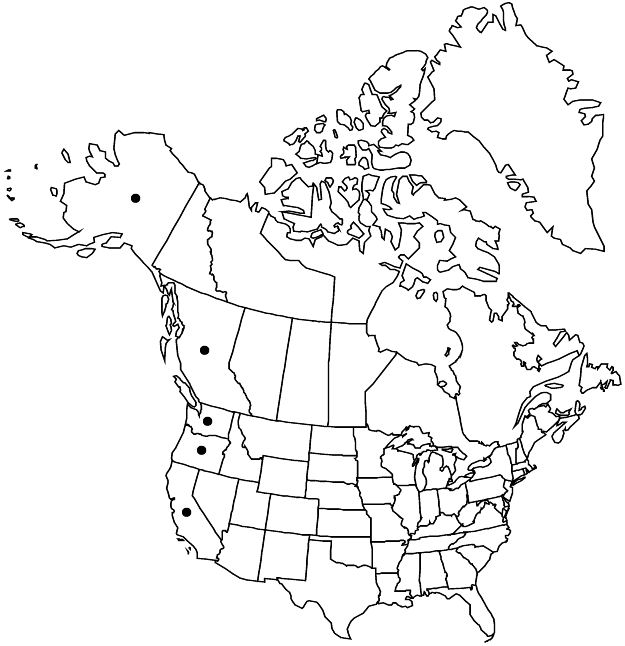Fragaria chiloensis
Gard. Dict. ed. 8, Fragaria no. 4. 1768.
Plants hermaphroditic or unisexual. Leaves dark or dull green, not glaucous, thick, leathery, strongly reticulately veined abaxially, terminal tooth of terminal leaflet usually shorter than adjacent teeth, abaxial surface densely silky, adaxial glabrous, shiny. Flowers bisexual, pistillate or staminate (plants dioecious or trioecious); hypanthium 14.5–27.8 mm diam.; petals 5(or 6), obovate to widely depressed obovate, margins distinct or overlapping. Achenes in shallow pits or partially embedded, reddish brown to dark brown, 1.4–2 mm; bractlets and sepals clasping; torus not easily separated from hypanthium.
Distribution

B.C., Alaska, Calif., Oreg., Wash., South America.
Discussion
Subspecies 4 (2 in the flora).
Fragaria chiloensis was first described from cultivated plants that had been selected in Chile at least 400 years ago and brought to Europe in 1714. Subsequently, it was realized that wild-growing plants of this species exist in North America and South America. The typical subspecies is restricted to South America; subspp. lucida and pacifica are present in North America, and the latter in Hawaii as well.
The proposal by K. E. Hokanson et al. (2006) to classify subsp. lucida and subsp. pacifica as forms of one North American subspecies seems inappropriate.
Selected References
None.
Key
| 1 | Stolons, petioles, peduncles, and pedicels usually appressed ascending-hairy, sometimes almost glabrous. | Fragaria chiloensis subsp. lucida |
| 1 | Stolons, petioles, peduncles, and pedicels spreading-hairy (usually densely so). | Fragaria chiloensis subsp. pacifica |